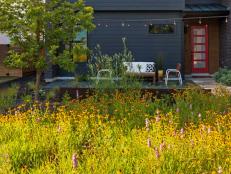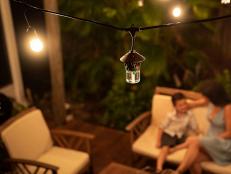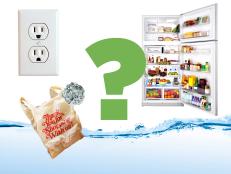Eco-Friendly Cities: Where to Buy

Chicago Convention and Tourism Bureau
Living green isn't just about your house, it's also about your community. Being in a community that makes it easy to be green will make your transition to eco-friendly life that much simpler.
Here are some things to consider when searching for a green neighborhood or city:
Are there alternative power sources?
Sure, you can buy your own solar panels, but it's simpler to tap into a city's existing renewable energy sources, like wind, solar and hydroelectric power.
Eugene, Ore., is a great example of a power-forward city. Much of the Pacific Northwest already uses clean hydroelectric power. Eugene takes it one step further: The city draws another 9 percent of its energy from wind farms.
What about public transportation?
The average suburban driver makes 13 car trips a day and all that fuel guzzling can cancel out home energy savings. What's a homeowner to do? Live somewhere that has ample public transportation.
New York City has the largest public transport system in the world, and 54 percent of Big Apple residents use subways, buses and trains rather than their own wheels. In Washington, D.C., 34 percent of residents use public transit. Boston comes in third with about a third of its residents using the city's transportation services.
If you'd rather use your own two feet, look for city that's a pedestrian paradise. Madison, Wis., was named the best walking city in 2007 by Prevention magazine. If you live and work downtown, you can easily stroll to the Dane County Farmers' Market, Capitol Square and the famous State Street pedestrian mall.
Cambridge, another Massachusetts city makes the list. A quarter of the residents here commute on foot -- more than any other city. Plus, the home of Harvard University is organized in squares with tons of businesses and restaurants, all in a pedestrian-friendly format.
And then there's San Antonio, Texas, which has been called "the American Venice" because of its famous Riverwalk trail, which is a network of pedestrian-only paths along the San Antonio River. There are also more than 300 days of sun in San Antonio, so you'll almost never have to walk in the rain.
Don't see your favorite city on the list? If you choose the right neighborhood, you can cut down on your driving in almost any city. Choose a neighborhood that's close enough to your frequent haunts that you can walk; you'll save money and help the environment at the same time.
How green is the city, literally?
How much space is devoted to green spaces, like public parks and nature preserves? You'll have more outdoor room to roam, and all those trees will provide oxygen and improve air quality.
Chicago has more than 500,000 trees inside the city limits, along with 12,000 acres of public parks around the city. Sacramento, Calif., has more trees per person than any city in the country. Tree-friendly Seattle is often called "the Emerald City" because of its reputation for great parks, gardens and street plantings. A city's commitment to green space indicates that it's serious about going green.
Are there green building programs?
If you're thinking about going green, why not buy a home in a place that makes it easy? Cities with green building programs give their residents valuable discounts for eco-friendly updates, so that could mean more green in your pocket.
You could save some major cash in Portland, Ore., when you decide to do green updates. The city offers a tax credit for those fixes, up to 35 percent of the total cost. If you think of a bigger eco-friendly project to benefit the city, you could get a grant of up to $225,000 to make it a reality. That's definitely not chump change.
Chicago makes the grade for green building programs as well. It has more LEED-certified projects than any other city. The city offers a $5,000 tax credit to homeowners who ditch shingles for a green roof. It also houses a Green Technology Center, which develops ways to use eco-friendly practices to make Chicago as green as it is windy.
Similarly, Minneapolis will give you or your community group between $1,000 and $10,000 to do your own green project. This can range from talks about global warming to household power consumption. Seattle has a similar program.
Austin, Texas, also offers lots of green energy perks. By 2010, all the city buildings will run on renewable energy. Not sure what green updates to add once you move in? Austin Energy offers free consulting for homeowners and a rebate for solar panels.
What about recycling programs?
Recycling can go way beyond bottles and cardboard boxes, but only if a city and its citizens make it that way. Recycling saves trees, wildlife and lowers the use of toxic chemicals. It also cuts back on a city's need for landfills and incinerators.
If you want to live green, it's important to find a city that strives to waste as little as possible. In Lexington, Ky., for example, the citizens recycle everything from old electronics to scrap metal. Getting the scoop on recycling can give you an insight into the residents' concerns for the environment and help you narrow down choices for a green community.














































